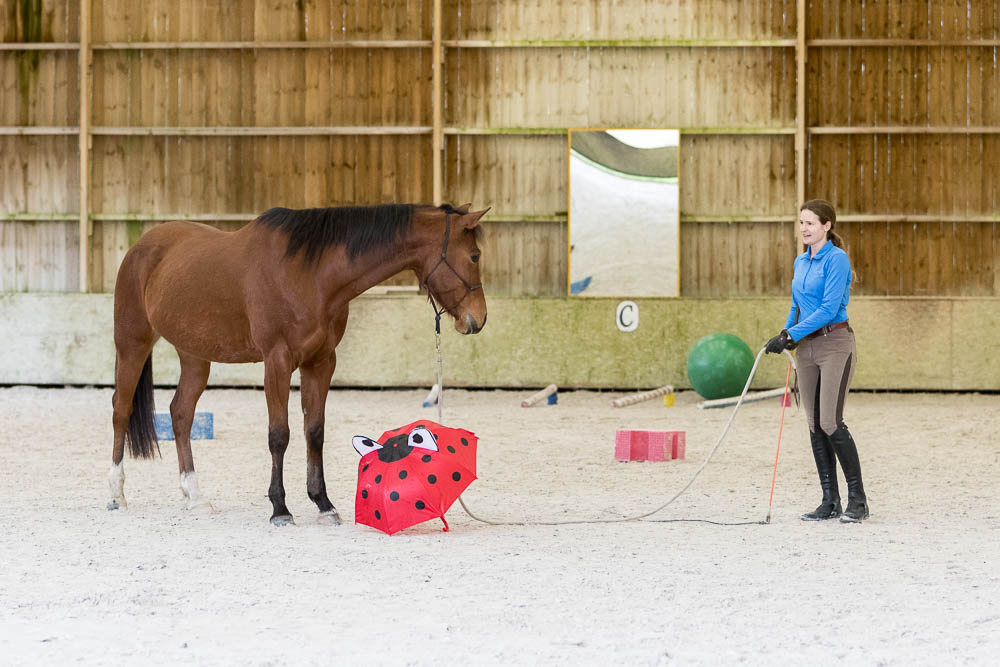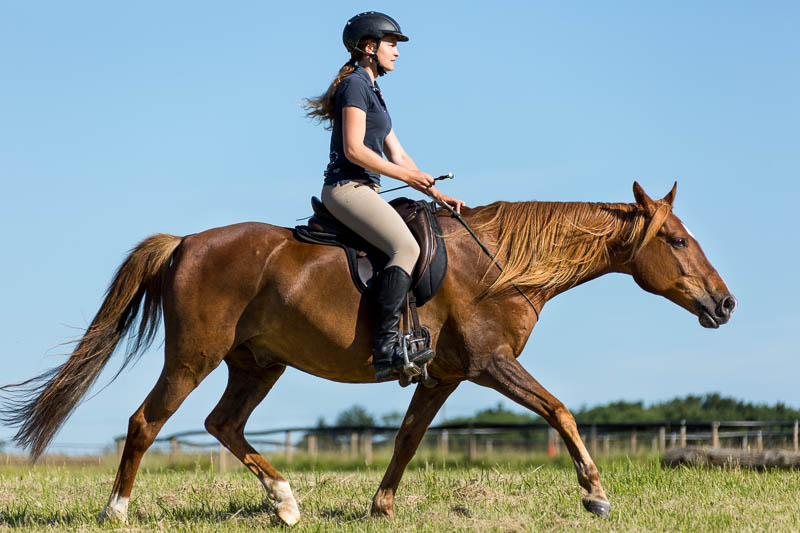How can I know my horse understood an exercise? How good is good enough?
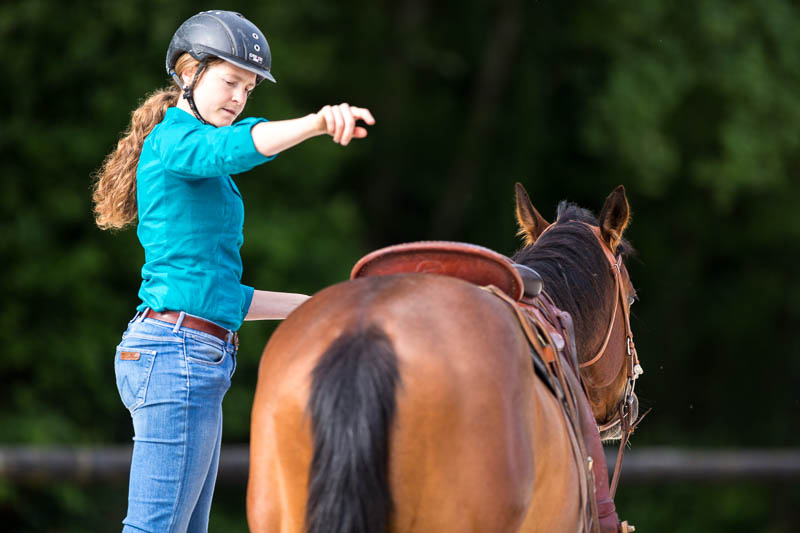
Question
A few days ago, this question reached my mailbox:
“How can I know if my horse understood an exercise and I can go to the next step?
All horses learn at a different speed and if one important step is not well understood, many problems can arise because of this.
Sometimes it seems that an exercise is good enough, but in fact, it is not the case.
It seems to me that this is an important point to succeed.”
Thank you, Tema, this is an excellent question and I am sure a lot of people ask themselves the same.
Answer
How good is good enough and how can I be sure that my horse understood?
These are important key points to success. It is often hard to see if a horse really “got” it.
Especially if in the next session, everything seems to be forgotten.
If this happens to you, the first question you should ask yourself is:
Is my horse in a learning frame of mind?
Is your horse connected, calm and responsive?
Or is he still thinking of his friends in the field, worried about the wind, spooking of something or is he still in his siesta?
During the first 10-15 minutes, do whatever is necessary to bring your horse into the learning frame of mind.
Only if he is connected, attentive and calm, can he be open for your requests.
As long as his mind is occupied thinking about friends, food or monsters in the bushes, he will not be able to put much effort into your requests.
This is the number 1 reason why it seems that the horse forgot all about it.
He didn’t forget, he is just thinking about something else.
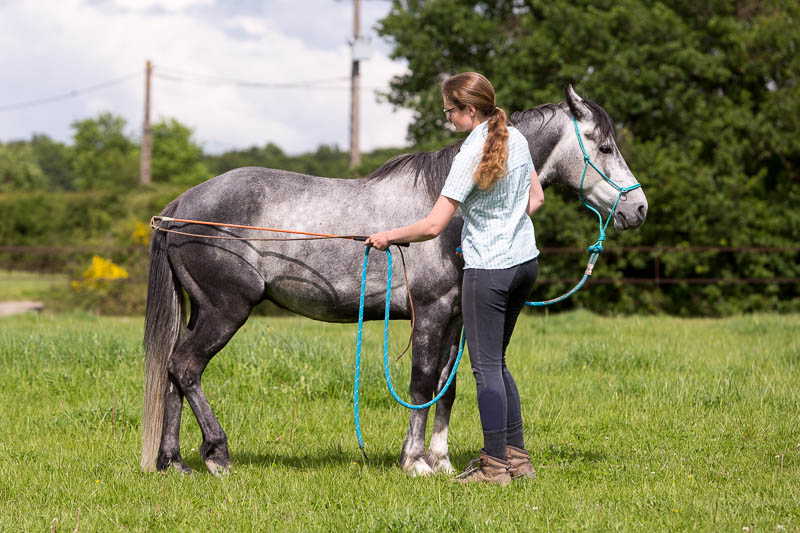
Learn to read your horse. Although this pony is standing still, he clearly is not relaxed!
You need to become hood in reading your horse
Did he lick and chew after or during doing the exercise?
Is he blinking his eyes or are his eyes staring wide open?
Was he mentally involved and thinking about what you ask or did you just manoeuvre his body?
If you didn’t have your horses mind engaged in the process, he most probably didn’t learn.
Blinking, licking and chewing after an exercise are very important indicators that your horse is mentally involved and thinking about what you did.
How to measure progress
Can your horse do the exercise correctly sooner, at a faster gait, at the first request, with more lightness?
Horses learn extremely fast and mostly we need to ask for a progression every single session to make sure that the horse stays mentally interested and involved.
Progression can be to ask for more lightness, more steps/laps, more distance …..
Often it takes quite some time when we introduce an exercise for the first time until we reach a good result.
Remember how much time it took at the first try.
The next time you ask, it should take maximum half the time until you reach the same result.
Then you know that your horse understood the exercise and is ready for the next step - even if the next step is tiny.

Practice mental scoring in your sessions with your horse.
Score each exercise between 1-10.
Remember the quality you got on the first try for each exercise you did.
Then see how much you can improve from there and score again at the best result.
Remember these scores and compare to them in your next session.
If for example I score a 1 on the first try to ask a horse to yield sideways and I end the session with a 5 and a lick and chew.
I expect to start the next session with a 4,5 and end with a 7.
If I find myself starting at 1 again, my horse did not understand or is not in a learning frame of mind.
I probably just managed his body without his understanding….
And then, of course, it takes some experience to know how good is good enough to proceed to the next steps without issues.
The horse doesn’t need to do every exercise to perfection- he needs to have understood the exercise.
And that’s what experience will teach you.
Experience - How Good Is Good Enough
For some exercises, I want perfection - for example, all the confidence-building exercises I do when starting a horse.
I want that my horses are 100% confident with me, my tools and objects before I ride them for the first time.
But for other exercises, I might be happy with a score of 7.
Like for example, executing trot - canter transitions on a circle.
I would be happy if I get one upwards and one downwards transition on a light request.
Or if I teach a horse to yield to steady pressure, I am happy if the horse responds immediately (at one point in the session) on a light phase and gives me 2 steps. I don’t need 10 steps yet.
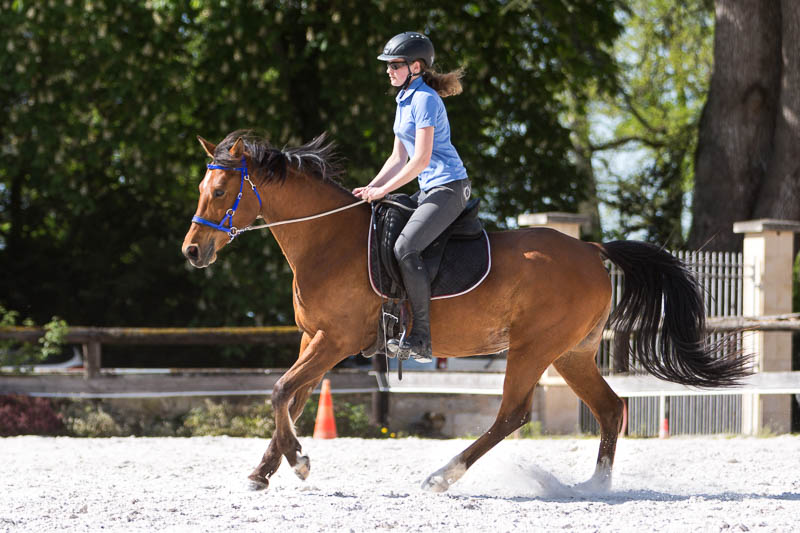
This is my mare Salima at our very first canter under saddle. How can you make sure that steps like this happen without stress?
Shoot for Good Initial Responses
I don’t need perfection to progress to the next step.
I know that my horse understood if my horse’s initial response to my question is immediate, positive and light.
I want to have a good initial response and be happy with little and build from there.
I am cultivating good initial responses.
Even if you only get an immediate positive try in the right direction of your horse after 5 repetitions of the exercise, that’s OK. Next session it will only be 2 repetitions.
Once my horse gives me consistent good initial responses, I can ask for more steps/strides/precision.
A good initial response is as if the horse is saying: “Yes, I know what you mean, let me show you how smart I am.”
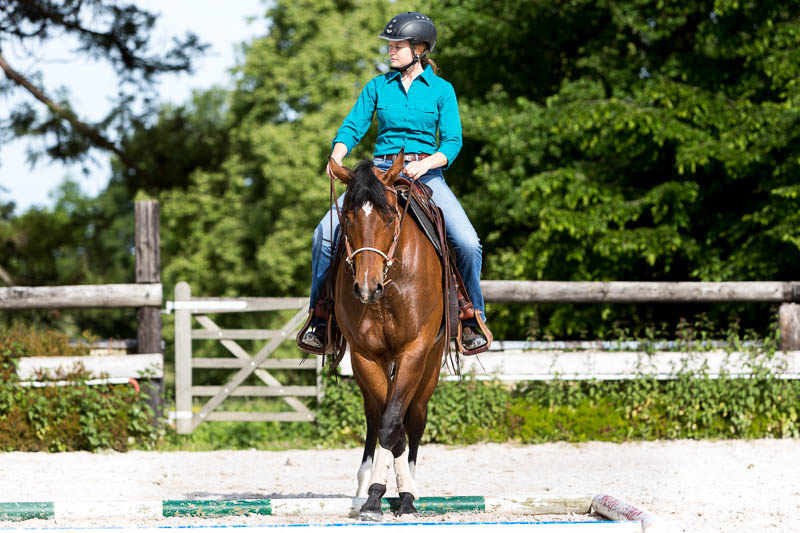
Let’s take for example the exercise “Sideways over a Pole”.
When you ask this for the first time to your horse, he might be very heavy, try to walk forwards or even backwards.
He is not showing a good initial response.
Maybe you manage to get a good step after a while and you can quit there.
After some repetition, your horse starts to understand.
The one good step is coming sooner and sooner until your horse does the good step immediately and lightly at your very first and light request.
That is a good initial response.
Be ready to fix things right away!
There is always the possibility that something suddenly doesn’t “work” anymore if you go to the next step.
Be ready to drop everything, fix that broken ingredient immediately and only then go back to the original exercise.
For example, you are working on direction with your young horse - but on that day he doesn’t really go forward.
Your go button is broken.
It doesn’t help if you keep practising steering, you have to go back to the previous step and fix you go button.
This is a normal process.
The quality will not stay persistently good - you have to be ready to reestablish the necessary quality whenever something is broken.
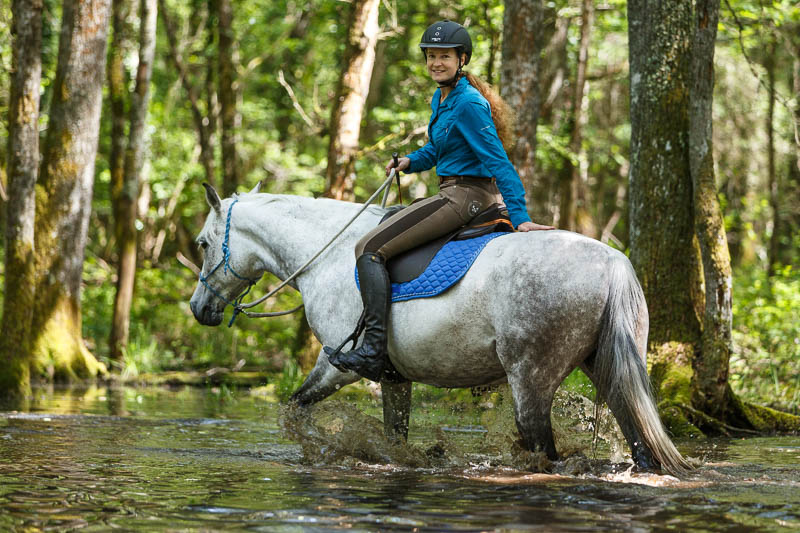
Conclusion:
I hope that this helps you to know a bit better when an exercise is good enough.
Learn to read your horse and shoot for good first tries.
Discipline yourself to score the quality of each exercise mentally so that you can keep track of progress.
That’s why I included the progress sheet in the e-book about the 14 Preparations to a safe and respectful Colt Start. And finally, be ready and willing to go back and fix broken ingredients.
Related Articles

